This essay was originally published in The Public Domain Review under a Creative Commons License. Please see their rules for reuse.
Not a lot concerning the artist, erotic publisher, explorer, and general enigma Count de Waldeck can be taken at face value, and this certainly includes his fanciful representations of ancient Mesoamerican culture which — despite the exquisite brilliance of their execution — run wild with anatopistic lions, elephants, and suspicious architecture. Rhys Griffiths looks at the life and work of one of the 19th century’s most mysterious and eccentric figures.

I first encountered the Count de Waldeck at the ancient Mayan ruins of Palenque. There, in a guide book, I read that from 1831 to 1833 an old European aristocrat, “crazy Count de Waldeck”, lived on top of a ruined pyramid, now known as Templo de Conde, or “Temple of the Count”, with two Mayan brides. While there he drew the Mayan ruins for posterity and was among the first Europeans to do so. Later, I read, he published “a book of fanciful neoclassical drawings that made the city resemble a great Mediterranean civilisation”, a crime for which he has since been condemned as a pioneer of the pseudohistory known as Mayanism. Tens of thousands of tourists visit Palenque each year, many from English-speaking countries, and the ubiquity of the guide in which I read the above makes it safe to assume that plenty of others will have had made a similar acquaintance with the “crazy Count”. Knowing him as I think I do now, I think this fact would have wounded him immeasurably.
In the eighteenth century, Spanish colonists had “rediscovered” Palenque. The ancient city — abandoned some time after 800 AD — was subsumed by jungle, which, it was not unreasonably hoped, might hide lost Mayan gold as well as palatial ruins. Around a century later — at the advanced age of fifty-nine — Jean-Frédéric Maximilien de Waldeck travelled to Mexico from London with similar financial motives. Waldeck saw an opportunity to make money through drawings. He lived in what the art historian Esther Pasztory describes as the second great age of exploration, one concerned with “conquest through knowledge of the world”, rather than the old-fashioned military kind. But he was also an artist, a good one, and though he took artistic licence — archaeologists have taken issue with the elephant heads and leopard skins which populate some of his Mexican illustrations — that, surely, is the prerogative of his trade. Waldeck drew for posterity because he cared about his place in it: the afterlife of his work and reputation provides an unambiguous lesson for those who would see their names writ in marble not water.
At Palenque, a sign by the Count’s Temple — a pyramid structure supporting a stone building of three rooms — confirmed that the Count de Waldeck was in Palenque, but claimed that he actually lived at the foot of the nearby Temple of the Cross, and for only two months.


The count’s Wikipedia page clarifies that he was, in fact, probably no such thing (a count, that is). Waldeck was possibly born on March 16, 1766, was a self-appointed count, duke or baron depending, presumably, on his audience, and, at various times, he claimed to be French, Austrian, Czech or British (his name indicates one, or possibly a fusion, of the former options). Where Waldeck is concerned, it is notoriously difficult to tell truth from self-aggrandising myth; little biographical fact about the man exists before 1822 when, aged fifty-seven, he worked producing theatrical lithographs in London. He redrew and published a famous book of Renaissance erotica, I Modi, in 1856 and claimed that he had been a student of the painter Jacques-Louis David in Paris, served with Napoleon in Egypt, travelled the world to an extent that remains impressive today, and lived to the age of 109 years and 45 days. Waldeck’s publication of I Modi definitely exists, but as for his time with Napoleon and the artistic apprenticeship, we only have his word which is not usually held in high regard. There is also an eye-raising, but almost certainly fictional, story regarding the circumstances surrounding his death: he supposedly died of a heart attack while eyeing a beautiful woman near the Champs-Élysées in Paris.1
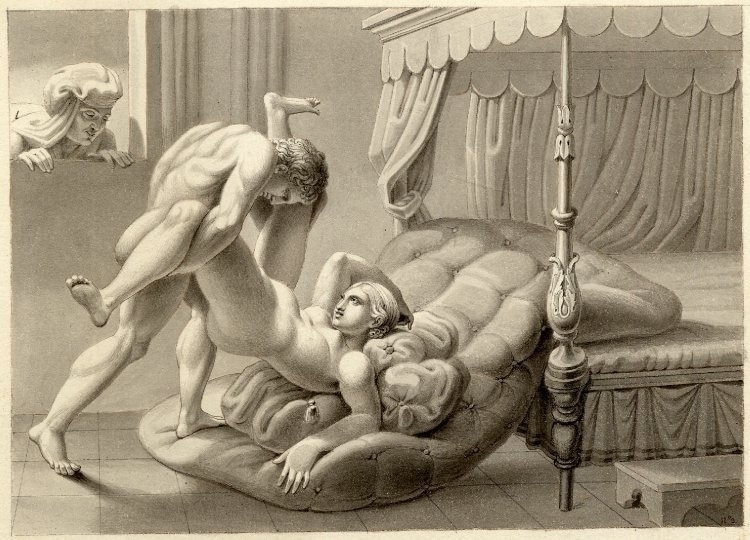
I thought the count might make a good protagonist in a picaresque novel and took to looking for his name in the index of any books I came across relating to Mexico or pre-Hispanic people. I tracked him down to two locations: Paris, where he is interred in the Père Lachaise Cemetery, and where a large collection of his work resides in the Bibliothèque nationale; and Chicago, whose Newberry Library houses another large collection of his oeuvre. As for details about his life, a great source of information was what is probably his first biography, Recollections of Two Distinguished Persons: La Marquise de Boissy and the Count de Waldeck, written by a wealthy, well-connected American writer from Philadelphia, Mary Rebecca Darby Smith, published in 1878. Smith’s book spans her introduction to the count, on a trip to Europe in 1867, and their friendship thereafter. It is fair to describe Recollections as a hagiography. Here, for example, she describes Waldeck stoically accepting news that a diorama of world history he had been working on was not of interest to the American circus titan P. T. Barnum:
It was not for thee, brave man, to succumb to ill fortune — steady as an oak of the forest thou hast borne the blasts of adversity; and when thy exit comes, from ‘the alpine heights of affliction,’ thou mayest find thyself in green pastures, at rest and satisfied evermore.
Arriving in Europe, Smith is advised to visit Waldeck in Paris. Later, after his death, she recalls reading a letter which stated that “among the many interesting objects of Paris, nothing appeared more remarkable than the aged Count de Waldeck, in his hundred and second year”. Waldeck was clearly a well-known fixture in the city, at least among a certain class of traveller. She finds Waldeck, on the Rue des Martyrs, an “amiable and manly character”, and is soon enthralled by his incredible anecdotes. These include (but are not limited to) his having dined with King George III, fished with Lord Byron in Scotland, painted Marie Antoinette shortly before her execution (a commission by the wife of an Irish MP), and lived, by his own calculation, through forty-two revolutions. The best of Waldeck’s stories concerns his time serving Napoleon in Egypt (a claim military archives do not corroborate). Even if fiction, it is brilliant. Smith writes,
He related to me that he had the power to copy the handwriting of anyone perfectly; that upon one occasion he wrote the name of Napoleon so like it that it was a facsimile. Unfortunately Bonaparte found out and sent for the Count. “I hear you can imitate the handwriting of anyone, and that you imitated my signature?” “Yes sire,” replied the Count. “Now,” continued Napoleon, “write it here and then look at the top of the paper before you”, which the Count did and, to his dismay, read “Condemned to three months’ imprisonment at Vincennes.” He bowed his head and went to the prison. Two weeks later, Napoleon sent for him, and said: “You will not do it again? It is bad practise and dangerous. I had to make an example of you, though I know that you are a friend to me and of my dynasty.”
Thus the count’s first Napoleonic tussle. His second — with the “Napoleon of the West”, Antonio López de Santa Anna, the soldier and politician who dominated Mexican history in the first half of the nineteenth century — is no less serious in consequence. In an obituary published shortly after Waldeck’s death, the London Illustrated News reports how, having spent three years studying the ruins, flora, and fauna of Palenque encouraged by the Mexican government, he was eventually — after being suspected of espionage — “deprived by Santa Anna of the greater part of his drawings and MSS”. He returned to Europe with what he had kept shortly afterwards, though it is entirely possible that this was, in fact, everything.
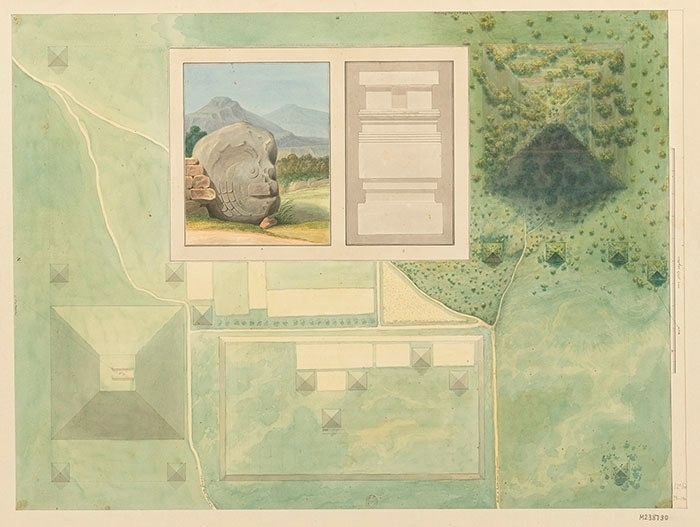
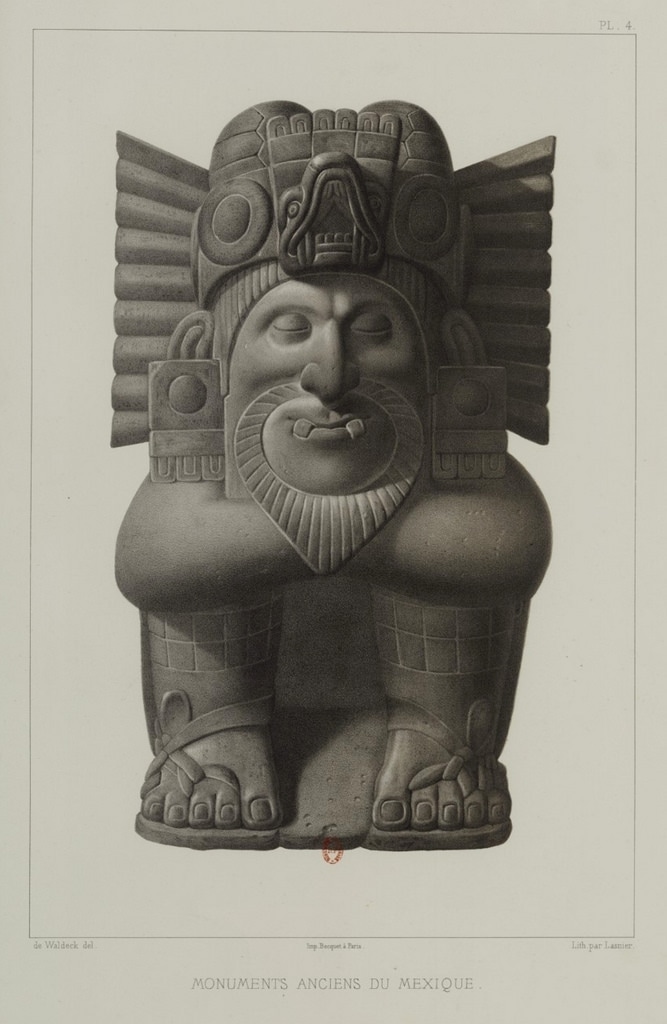
Smith’s account of the count’s remarkable life is a biography in which the author, rooting for her subject, hopes desperately to write a happy ending, but is forced to conclude with tragedy. Anxiety spreads from the aged count to the young writer that his work has not reached the audience it deserves. Of his Palenque oeuvre he opines that “it is not worthwhile to think of my great work of Central America unless I can publish it in New York.” Waldeck’s wife — several decades his junior — confides to Smith that she is “greatly in hopes he will live long enough to see crowned with success the drawings he commenced”. The count decides to travel to New York and, on arrival, there present P. T. Barnum with the aforementioned glass diorama which will “make my fortune”. He sets upon this resolution at the age of 104.
When the famous Barnum sees my spectacle he will not fail to speculate on its profits . . . for never before has any artist of merit occupied himself in reproducing upon glass the history of all countries, and the science of all people, since the heroic age to this date. My age, my journeys, and my long experience become a guarantee of the archaeological, geological, astronomical, etc. perfection, which will teach the people what they do not know.
Smith agrees to plead the count’s case to Barnum but, in doing so, is met with a reasonable rebuff: “I assure you I feel too old, and certainly your friend is, to engage in a new speculation.” “Thus,” she writes, “perished the ardent hope of the Count for the realization of his efforts. He had to mourn talent unappreciated, hope frustrated, and the enterprise of his brain all lost as far as he was concerned.”
In their last meeting, the day before his death on April 29, 1875, she visits the count who is a bedridden invalid, effectively rubbishing the story of his lusty demise on the Champs-Élysées.

The best assessment of the count I have read is Esther Pasztory’s Jean-Frédéric Waldeck: Artist of Exotic Mexico (Albuquerque: University of New Mexico Press, 2010). Her focus on Waldeck’s art differentiates her from most writers for whom “Waldeck as a character has overshadowed Waldeck as a visionary” (it was amusing to learn, for instance, that, following a popular biography by Claude Baudez in 1993, the count became a superhero in a French comic strip). Waldeck’s work drew ire, Pasztory convincingly argues, because he was attempting science by means of art. He was typical of a type of eighteenth-century traveller artist whose work was scientific in that it observed and recorded the natural world but who was also acutely conscious of their audience. As Pasztory writes, circa 1800 such work “needed to be presented in a way that was comprehensible yet emotionally resonant”. Waldeck excelled at this latter requirement; his “Hollywood imagination” is evident in his additions and modifications, which range from altering the location of certain ruins to the inclusion of figures from classical mythology. A good example of the latter is his Ariadne and Theseus Inside the Temple of the Sun at Palenque, a painting displayed at the Salon in 1869, which depicts Ariadne and a Mayan Theseus walking inside the Temple of the Sun, Waldeck and a naked Mayan woman following behind.
Waldeck’s artistic flourishes, argues Pasztory, constitute “an entirely intentional redesigning of the monuments for the sake of attracting attention”. And there was certainly motivation for that: Waldeck arrived in Mexico to find rather more competition from other travel writers and artists than he had expected. So he drew Palenque through the prism of who he was: a European, from a continent in thrall to the classical world (like Waldeck, neoclassicism was born in the mid-eighteenth century), the exotic, ancient Egypt, and erotic nudes. This idiosyncratic approach made Waldeck’s vision difficult for his contemporaries to understand, but, despite this, he had absolute conviction in the importance of what he was doing — a quality which prompted Pasztory to compare Waldeck favourably with Andy Warhol.

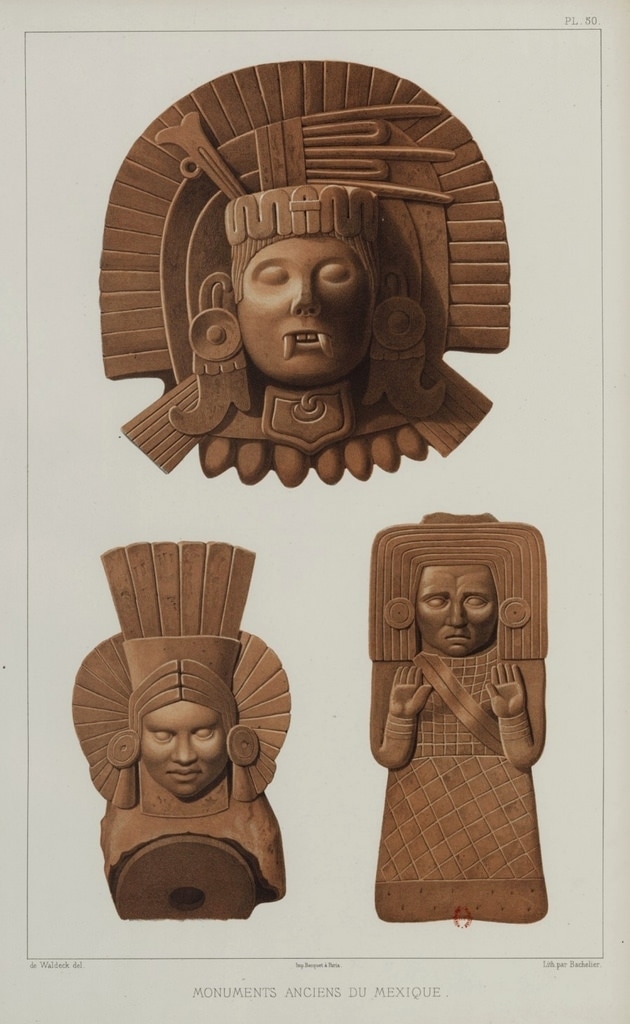
Unfortunately for Waldeck, after the 1850s, photography played a more dominant role in exploration and reportage and, writes Pasztory, “this blending of art and science came to an end, much to the relief of scientists”. Because he grew up in the eighteenth century, such a hybrid approach seemed possible to him. By the middle of the nineteenth century it made little sense. It is certainly difficult to capture the zeitgeist when you belong to a different century: I doubt history offers many clearer examples of this truth than the count.
In her Recollections, Smith concludes that “the life of patient and persevering artistic labour led by Count de Waldeck is without parallel and should not be forgotten”. I read similar phrases regularly at the history magazine where I work, as writers pitch to resuscitate historical events and, more frequently, people overlooked, misunderstood or simply forgotten.
Waldeck has a centuries-old temple named after him, which is certainly an enduring “I was here” statement. I wonder, though, whether the curators at Palenque might consider adding Mary Darby Smith’s tragic, if damning, assessment of the count’s life to the explanatory sign by his temple: “Talent unappreciated, hope frustrated.” “Crazy” Count de Waldeck, vandal of Mayan history, might then become the eponymous hero of a monument to noble failure, a laureate of the underappreciated or misunderstood. Surely the majority of those who first encounter the count at Palenque would consider themselves members of that unhappy group, at least occasionally.
Rhys Griffiths is a London based writer and editor and Assistant Editor at History Today. @rhyswgriffiths
This story is referenced in Peter O. Koch’s book John Lloyd Stephens and Frederick Catherwood: Pioneers of Mayan Archaeology (Jefferson, NC: McFarland, 2013) where Waldeck appears as a bit part character dwarfed by the achievements of his contemporary, the English explorer Catherwood.↩
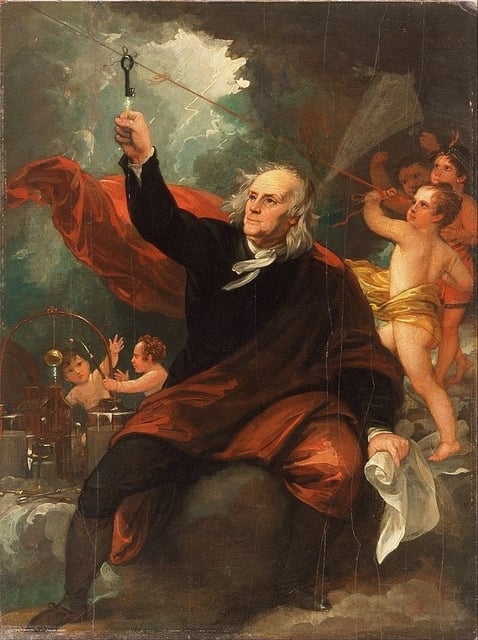 Flash Mob: Revolution, Lightning, and the People’s Will
Flash Mob: Revolution, Lightning, and the People’s Will
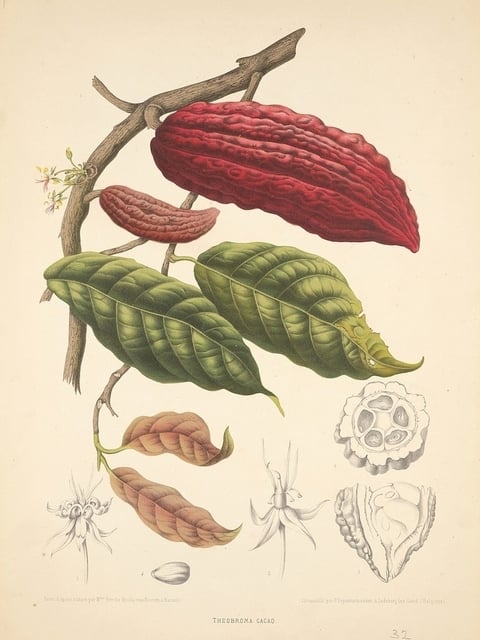 Pods, Pots, and Potions: Putting Cacao to Paper in Early Modern Europe
Pods, Pots, and Potions: Putting Cacao to Paper in Early Modern Europe